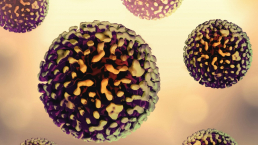
Factors Affecting Mental Health in the Pandemic
Mental health is just as important as physical health for a happy and healthy life. However, the pandemic brought about unique circumstances that impacted the mental health of millions. The link between mental health and the pandemic is a complicated one, as the situation differs between groups and subsections of society. Let’s get the full picture by diving into some revealing MDPI research related to mental health in the pandemic.
Mental health in the pandemic – effect on people
The pandemic forced us to stay indoors and minimize social contact. Social isolation has always been associated with negative mental health outcomes. But, as we’ll see, there are other contributing factors to poor mental health.
It’s more important than ever, as we recover from the toll that this crisis has taken on the world, to assess and learn from the changes that occurred.
By taking a holistic and research-led approach to this issue, we can tackle it head-on. Five important research studies, four published in IJERPH and one in Current Oncology, review the impact on vulnerable populations: those suffering from illness, young people, school teachers, students, and older adults.
· Those suffering from illness
For those already undergoing treatment for life-threatening diseases, the pandemic presented another significant challenge.
A manuscript describes how cancer patients undergoing chemotherapy were negatively affected. In a study of 42 women with gynecological cancer in Lombardy, Italy, it was found that concerns about the pandemic ‘significantly affected the levels of anxiety and emotional functioning’.
The study, therefore, recommends that psychological support be added to treatment plans in such cases.
· Young people
When it comes to young people on the cusp of adulthood, there’s a nervous excitement for what the future could hold. But they had their lives turned upside down when operations were halted across the globe. Understandably, mental health in the pandemic was a big problem for them.
A study published in the Collection “Children and Adolescents’ Development: New Challenges and New Insights” showed that physical activity could greatly increase mental health outcomes in adolescents. The authors also found that physical activity levels in adolescents were significantly lower during the pandemic.
It’s well known that exercise is one of the top strategies for self-care. But for the young, this is critical. When it comes to average exercise habits, peak physical activity comes at age 13, and then declines by 7% year-on-year.
· School teachers
Teachers are entrusted to educate future generations. They had to face either the technological challenges of online learning or the anxiety that comes from teaching in crowded classrooms.
A study in Healthcare shows that anxiety levels increased in teachers working in Ghana. This was mostly because they felt unsafe about their surroundings.
Putting together a program to improve resilience was suggested by the authors as the best solution.
Improve resilience to improve mental health in the pandemic
The study suggests that an intervention in the form of a training program could drastically improve the mental health outcomes of school teachers.
The program would focus on “improv[ing] teachers’ resilience to promote their wellbeing and facilitate effective instructional delivery”. The publication of this research presents an opportunity to develop this training in the event of a future crisis. This way, education boards can be better prepared to provide the necessary training to their staff.
· Students
The pursuit of knowledge and betterment is the bold endeavor of students in higher education. Unfortunately, this goal was stalled by the global events of 2020.
A study looks at how hope mitigated the effects of fear in the COVID-19 pandemic. Students were more likely to experience fear and depression if they had less hope in general in their lives.
Hope and mental health in the pandemic
Hope is strongly tied to feelings of happiness and positivity. To be hopeful is to have good feelings about a possible future.
However, this was difficult for many during the pandemic, due to the nature of the crisis and its lack of a foreseeable ending.
Future research could look at how instilling hope can reduce the likelihood of fear and depression in a subsequent crisis.
· Older adults
Adults aged 60+ also suffered from poor mental health during the pandemic. A study in IJERPH reveals that, in a cohort of 1257 adults aged 60 and over in Chengdu, China, physical activity, self-efficacy, and social support were all helpful in the mitigation of poor mental health.
Improve self-efficacy to improve mental health in the pandemic
Self-confidence describes someone’s belief in themselves. But self-efficacy is more specific. It describes a strong belief in being able to achieve one’s goals.
In old age, declining physical health may mean that some people doubt their abilities more. The pandemic only served to heighten these feelings, with older people considered at-risk, and often told to isolate themselves further.
In a future pandemic, a comprehensive plan for older people could significantly improve their mental health outcomes. Instead of largely relying on citizens to come together as a community to help older people, governments can ensure that this vulnerable population gets the support they need.
Lessons from the mental health in the pandemic research
These studies demonstrate the extent to which mental health can be affected in a crisis.
And as researchers outline that the next pandemic will likely be also caused by a zoonotic event, we can and should prepare for a similar threat to our daily lives.
We also need to protect the most vulnerable in our society, and this includes highlighting the mental health challenges that they face. We should work to improve mental health services around the world, particularly targeting those most likely to be affected.
Research continues to highlight the ongoing effects of the 2020 pandemic while coming up with solutions to the problems presented.










